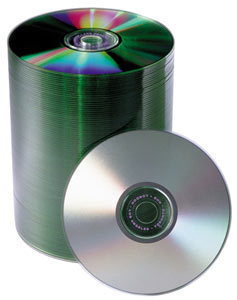CD Dimensions
The size of a CD or compact disc is 0.005 inches, thickness wise.  It is 4.7244 inches in diameter. In the metric system it is 120 mm in diameter. Some CDs are smaller, measuring 80 mm in diameter. The center spindle in most CDs is 15 mm in diameter. These discs weigh about 16 grams. The CD capacity varies, but it usually ranges from 600 MB to 870 MB.
It is 4.7244 inches in diameter. In the metric system it is 120 mm in diameter. Some CDs are smaller, measuring 80 mm in diameter. The center spindle in most CDs is 15 mm in diameter. These discs weigh about 16 grams. The CD capacity varies, but it usually ranges from 600 MB to 870 MB.
Facts about Compact Discs
The CD is an optical disc used to store data. Early CDs were used to store digital audio. But as computers became popular, it is now being used to store music files, pictures, documents, videos and other computer files. The CD is also used for copying data files, backing up data or burning music.
Design
During the late 1970s, Philips and Sony began working on the idea of the compact disc. The two companies decided to fuse their ideas together so there will be only one standard. The first CD player was produced by Sony in 1981, called the CDP-101.
The physical size of the unit is based on the joint design of Philips and Sony. The compact is made from polycarbonate plastic. Dyed metal is set on the surface. This is the portion that contains the data.
The tint reflectivity that you use denotes the content of the disc. This is true regardless of the size of a CD. When the laser points the beam at the disc surface, the photodiode assesses the reflection. The information is processed and relayed to the device that is playing the CD.
Care and Maintenance
A common problem with CDs is they are fragile and can break easily. If the CD surface is scratched, the disc may get damaged. Parts of the CD may be impossible to read. Exposure to extreme temperature or conditions can damage it too. If the CD is broken, it will skip when you play it.
To prevent damage, you should return the CD to its case after using it. There are also CD cleaners currently available you can use. There are also special cleaning utilities for CD players. Regular cleaning can prolong the life of the CD.
The size of CDs helped lead to the demise of the floppy disk. Today however, sales of CDs are slipping as other storage devices with larger capacities are available. In particular the CD is facing stiff competition from DVD discs.





